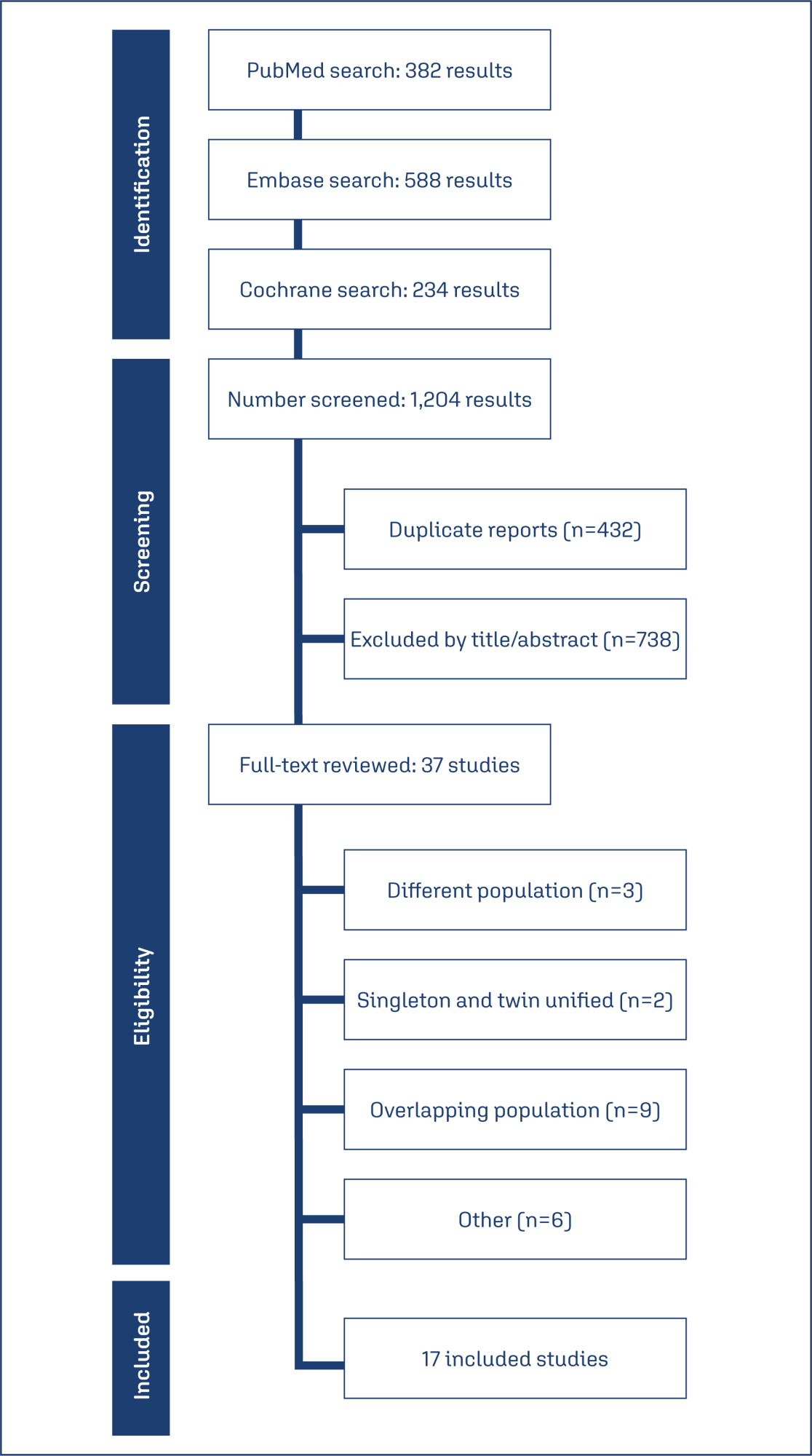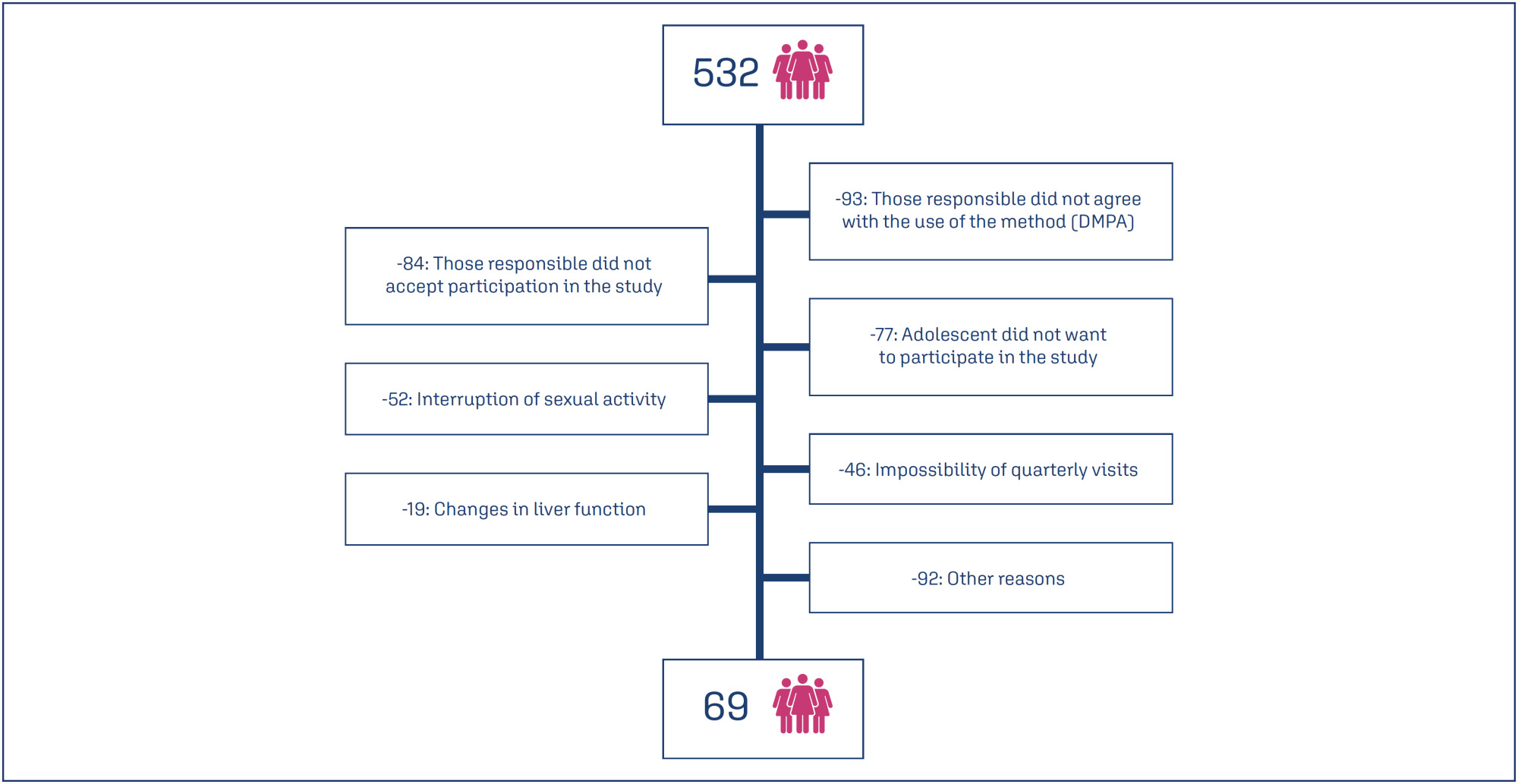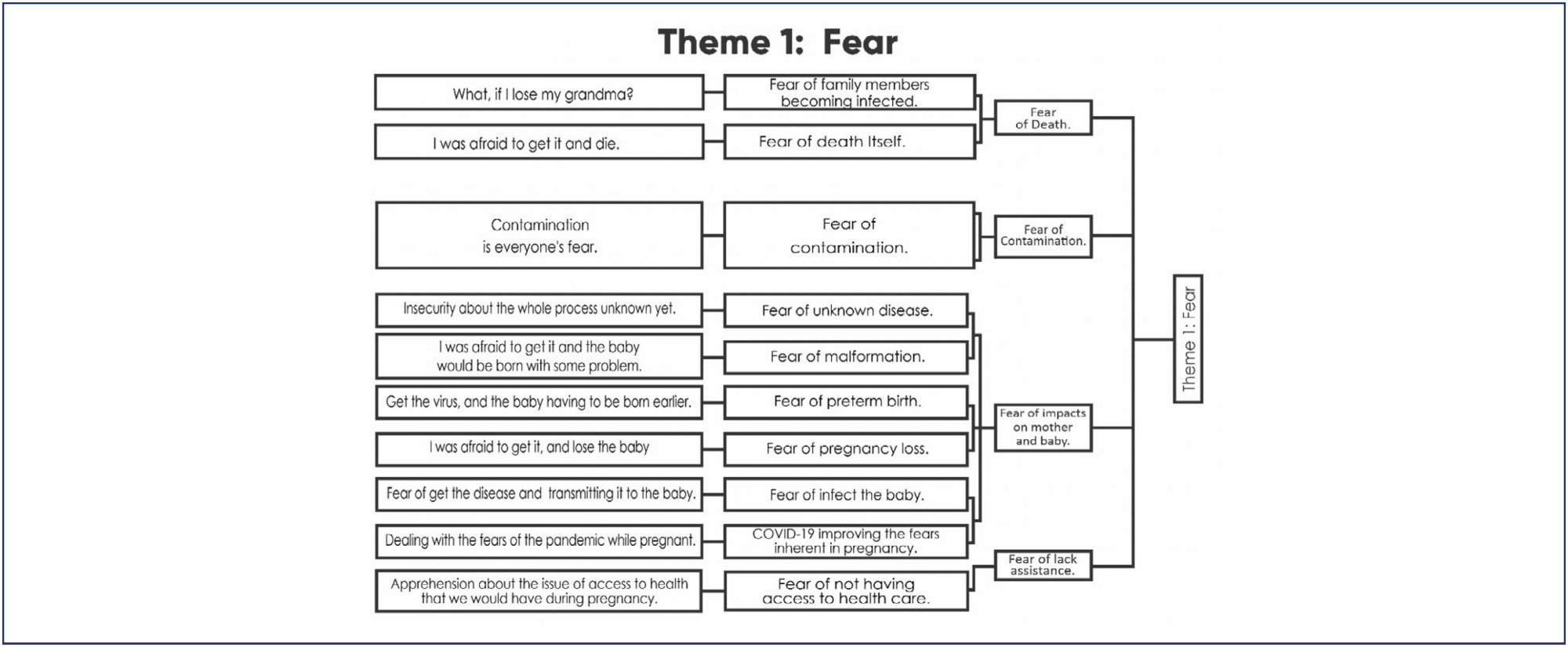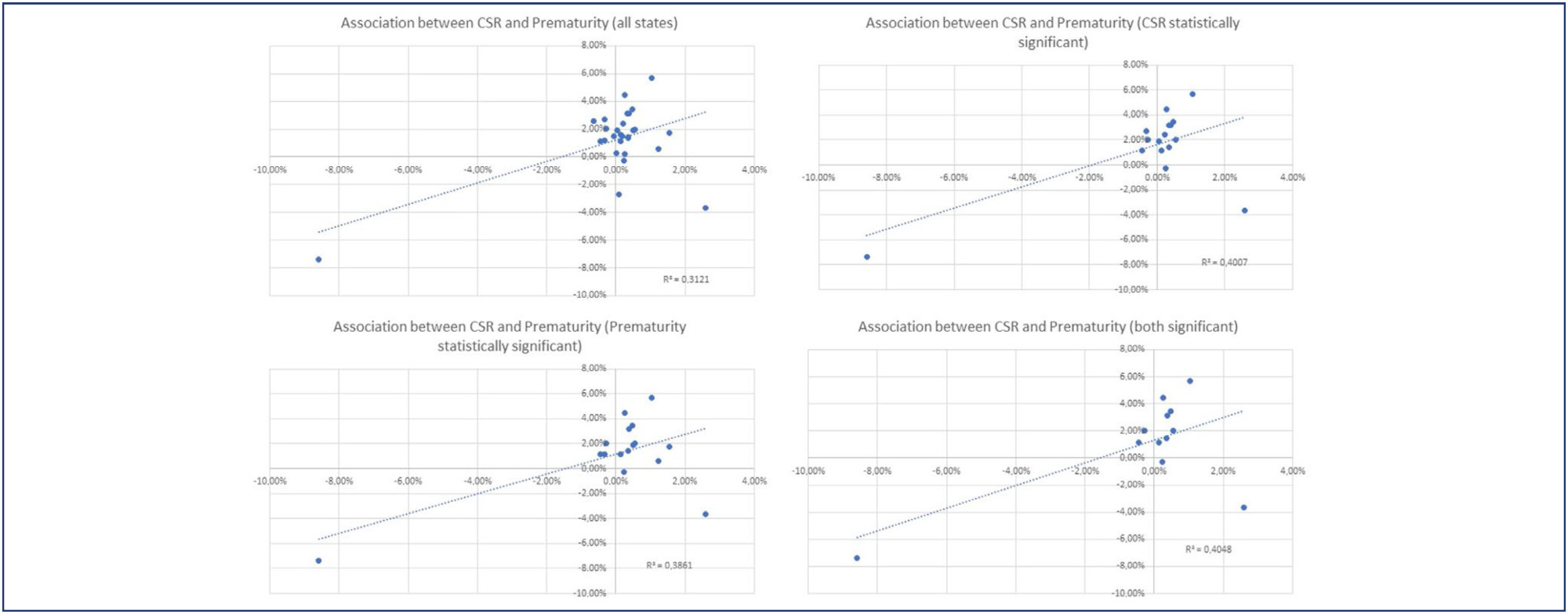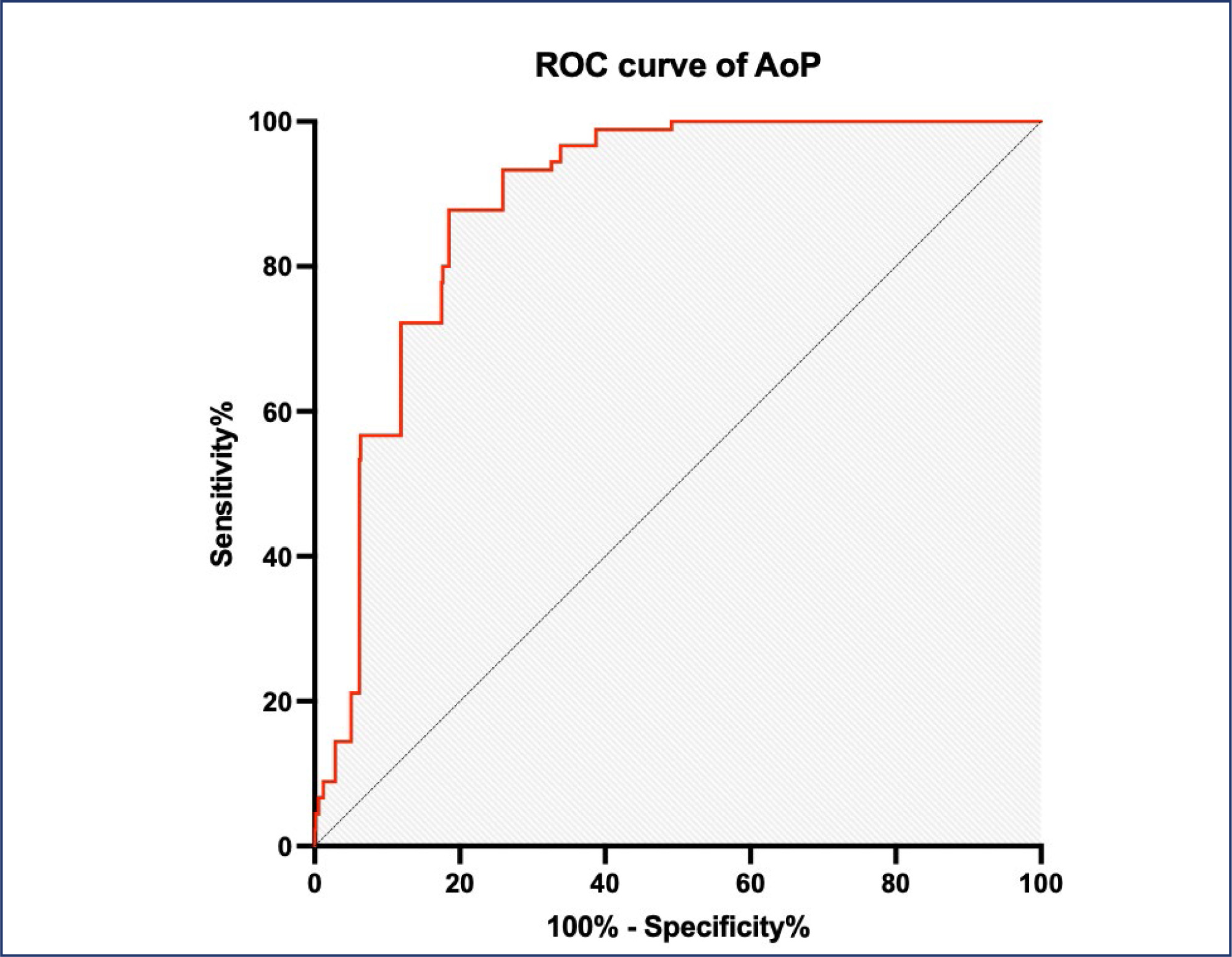-
Resumos de Teses06-26-2001
Avaliação da Leptina em Pacientes Portadoras da Síndrome dos Ovários Policísticos: Estudo de Suas Relações com a Testosterona, o Estradiol, o FSH e a Insulina
Revista Brasileira de Ginecologia e Obstetrícia. 2001;23(5):333-333
Abstract
Resumos de TesesAvaliação da Leptina em Pacientes Portadoras da Síndrome dos Ovários Policísticos: Estudo de Suas Relações com a Testosterona, o Estradiol, o FSH e a Insulina
Revista Brasileira de Ginecologia e Obstetrícia. 2001;23(5):333-333
DOI 10.1590/S0100-72032001000500010
Views47Avaliação da Leptina em Pacientes Portadoras da Síndrome dos Ovários Policísticos – Estudo de Suas Relações com a Testosterona, o Estradiol, o FSH e a Insulina […]See more -
Original Article06-26-2001
Fine Needle Aspiration Cytology Guided by Ultrasound in Nonpalpable Lesions
Revista Brasileira de Ginecologia e Obstetrícia. 2001;23(5):321-327
Abstract
Original ArticleFine Needle Aspiration Cytology Guided by Ultrasound in Nonpalpable Lesions
Revista Brasileira de Ginecologia e Obstetrícia. 2001;23(5):321-327
DOI 10.1590/S0100-72032001000500008
Views58See morePurpose: to determine the relationship between fine needle aspiration cytology guided by ultrasound of nonpalpable breast lesions (cystic or solid masses) with the ultrasound and histopathological features of the biopsy lesions. Methods: a total of 617 nonpalpable lesions were analyzed by ultrasound. Fine needle aspiration cytology was guided by ultrasonography and the cysts were distinguished from the solid masses by comparing the biopsies. The cytologic results were compared with the histological results in the case surgical biopsy was carried out. Results: of the 617 nonpalpable lesions 471 were cysts (451 simple cysts with 100% negative cytology and 20 cases were considered complex cysts; 3 (15%) of these had a positive or suspected cytology and in 2 cases malignancy was confirmed. There were 105 solid masses, 63 of them with negative cytology. Fifty-nine cases had a negative biopsy, and 4 cases (0.3%) were false-negative but all of them presented disagreement between the cytological and image features; in 14 cases (13%) there was a suspected cytology and in 5 of them carcinoma was confirmed; in 14 cases (13%), the samples were insufficient, 1 case was carcinoma and in 51 cases, a triple diagnosis was concordant and the lesions were followed-up. Conclusion: cytological analysis of simple cysts is not required, but when they are complex, cytological analysis is mandatery. In the case of nonpalpable solid masses, cytology must be correlated with ultrasound and mammography features. If the results are discordant, the lesion should be followed-up.
PlumX Metrics
- Citations
- Citation Indexes: 1
- Usage
- Full Text Views: 123337
- Abstract Views: 960
- Captures
- Readers: 12
-
Original Article06-26-2001
Angiogenesis in Squamous Cervical Neoplasia: Comparative Study of two Endothelial Cells
Revista Brasileira de Ginecologia e Obstetrícia. 2001;23(5):313-319
Abstract
Original ArticleAngiogenesis in Squamous Cervical Neoplasia: Comparative Study of two Endothelial Cells
Revista Brasileira de Ginecologia e Obstetrícia. 2001;23(5):313-319
DOI 10.1590/S0100-72032001000500007
Views103See morePurpose: to compare the efficiency of anti-factor VIII and anti-CD34 antibodies as vascular makers in cervical cancer, in cervical intraepithelial neoplasia and in normal cervix. Methods: using an immunohistochemical method, factor VIII-related antigen and leukocyte antigen CD34, we performed microvascular counts in 18 squamous cell carcinomas, in 15 cervical high-grade intraepithelial neoplasia, in 15 low-grade intraepithelial lesions and in 10 normal cervices. Using light microscopy we counted microvessels per 400X field in the most active areas of neovascularization with higher microvessel density in each case. Results: the average of microvessels stained with anti-CD34 in invasive carcinoma, high-grade intraepithelial lesions, low-grade intraepithelial lesions and in the normal cervices was 154, 134, 112 and 93, respectively. When we used anti-factor VIII the average was 56, 44, 33 and 30 vessels, following the same order. High-grade intraepithelial lesions and invasive carcinomas showed greater means number of vessels than normal tissue. Conclusions: the use of anti-CD34 allowed the detection of a greater number of vessels when compared to anti-factor VIII. However, we could observe that anti-factor VIII staining was able to significantly discriminate high-grade from low-grade lesions.
-
Original Article06-26-2001
Polycystic Ovary Syndrome: Doppler Flow Measurement Evaluation
Revista Brasileira de Ginecologia e Obstetrícia. 2001;23(5):307-312
Abstract
Original ArticlePolycystic Ovary Syndrome: Doppler Flow Measurement Evaluation
Revista Brasileira de Ginecologia e Obstetrícia. 2001;23(5):307-312
DOI 10.1590/S0100-72032001000500006
Views104See morePurpose: to evaluate the effectiveness of color Doppler as a diagnosis method for polycystic ovary syndrome (PCOS) through blood flow variations in the ovarian stroma, in the uterine arteries and in the subendometrial tissue. Methods: thirty patients divided into two groups were selected: fifteen patients with amenorrhea or oligomenorrhea, hirsutism (Ferriman and Gallwey score >8), body mass index >25 kg/m² and echographic examination identifying increased hyperechogenic stromal and ovarian polycystosis (study group), and an identical number of patients presenting normal menstrual cycles, with no signs of hirsutism and with normal ultrasonography (control group). Transvaginal Doppler flowmetry measured systolic peak velocity or maximal velocity (Vmax) pulsatility index (PI) and resistance of ovarian stromal vessels, uterine arteries and subendometrial layer. Results: Doppler velocimetry showed significantly higher Vmax layer (p<=0,0004) in the ovarian stromal of patients with PCOS (12.2 cm/s) when compared to the control group (8.05 cm/s); the uterine artery PI was also higher in the PCOS group (3.3 cm/s) versus the control group (2.7 cm/s); other Doppler velocimetry parameters did not show significant differences. As we established a cutoff = 9 cm/s for the sample for Vmax, we obtained the percentages of 95.2 for sensitivity, 80.0 for specificity, 83.3 for positive predictive value and 94.1 for negative predictive value. Conclusion: Doppler velocimetry might constitute an additional tool to be incorporated in clinical and ultrasonographic investigation concerning the PCOS diagnosis.
-
Original Article06-26-2001
Intrauterine Transfusion in Maternal Rh Immunization
Revista Brasileira de Ginecologia e Obstetrícia. 2001;23(5):299-303
Abstract
Original ArticleIntrauterine Transfusion in Maternal Rh Immunization
Revista Brasileira de Ginecologia e Obstetrícia. 2001;23(5):299-303
DOI 10.1590/S0100-72032001000500005
Views69See morePurpose: to evaluate the intrauterine treatment of anemic fetuses that underwent intrauterine transfusions due to rhesus isoimmunization. Methods: the authors studied sixty-one fetuses undergoing intrauterine transfusions by the intravascular, intraperitoneal or both routes. The hydropic fetuses (19.7%) received only intravascular intrauterine transfusions. There was an overall number of 163 intrauterine transfusions with a mean of 2.7 procedures for each case. The indications for intrauterine transfusions were high values of bilirubin in amniotic fluid analyses by the Liley method or a hemoglobin concentration of cord blood below 10.0 g/mL. Results: the overall perinatal survival rate was 46% for hydropic fetuses and 84% for the nonhydropic ones. There were no maternal side effects related to the procedures. Half of the intrauterine transfusions were performed by the intravascular route. The mean gestational age at the delivery was 34.8 weeks. Conclusions: despite better perinatal results with intrauterine transfusions guided by ultrasound, especially using intravascular procedures, rhesus isoimmunization remains as an important cause of high rates of perinatal morbidity and mortality.
PlumX Metrics
- Citations
- Citation Indexes: 1
- Usage
- Full Text Views: 53026
- Abstract Views: 1311
- Captures
- Readers: 16
-
Original Article06-26-2001
Doppler Velocimetry in Screening of Aneuploidy in the First Trimester of Gestation
Revista Brasileira de Ginecologia e Obstetrícia. 2001;23(5):291-298
Abstract
Original ArticleDoppler Velocimetry in Screening of Aneuploidy in the First Trimester of Gestation
Revista Brasileira de Ginecologia e Obstetrícia. 2001;23(5):291-298
DOI 10.1590/S0100-72032001000500004
Views96Objective: to study the value of Doppler velocimetry of the ductus venosus and of the umbilical artery and vein, in the screening for chromosomal abnormalities at 10-14 weeks of gestation. Patients and Methods: a total of 314 fetuses were studied consecutively. In 112 cases a cytogenetic study was performed on material obtained from a biopsy of the chorionic villus, and in 202 cases the postnatal phenotype was used as a basis for the result. In addition to the routine ultrasonographic examination, all the fetuses were submitted to measurement of the nuchal translucency thickness and to Doppler velocimetry of the umbilical artery and vein, particularly of the ductus venosus. For statistical analysis the Fisher exact test and the Mann-Whitney test were used. Results: twenty-three cases of chromosomal abnormalities occurred. Of these abnormal cases, the ductus venosus blood flow during atrial contraction was absent (1 case) and reverse (22 cases), sensitivity was 92%. In the group of normal fetuses (289 cases), 6 evaluations demonstrated alterations in the Doppler of the ductus venosus (specificity of 97.6%, positive and negative predictive values of 76.7% and 93.3%, respectively); the false-positive rate was 2.4%. In reference to the umbilical vein and umbilical artery, there was no statistically significant difference between the abnormal and the normal group. Conclusion: The only parameter of Doppler velocimetry of the umbilical artery and vein which contributed to the detection of aneuploidies was the accidental discovery of the reverse blood flow in both vessels. Although our favorable results demonstrated that the Doppler velocimetry of the ductus venosus is effective in detecting aneuploidies, this conclusion, however, is preliminary and needs further investigation.
Key-words Chromosomal abnormalitiesDoppler velocimetryDuctus venosusprenatal diagnosisUmbilical arteryUmbilical veinSee morePlumX Metrics
- Citations
- Citation Indexes: 1
- Usage
- Full Text Views: 15083
- Abstract Views: 704
- Captures
- Readers: 1
-
Original Article06-26-2001
Leptin, Additional Link to the Pathophysiology of Preeclampsia?
Revista Brasileira de Ginecologia e Obstetrícia. 2001;23(5):283-287
Abstract
Original ArticleLeptin, Additional Link to the Pathophysiology of Preeclampsia?
Revista Brasileira de Ginecologia e Obstetrícia. 2001;23(5):283-287
DOI 10.1590/S0100-72032001000500003
Views71See morePurpose: to study in primigravid adolescents the behavior of serum leptin levels during the evolution of normal pregnancy, comparing the results with those obtained from preeclamptics. Methods: prospective, longitudinal study conducted in 15 normotensive pregnant adolescents and 5 preeclamptic adolescents. Serum leptin levels (ng/mL) were determined by radioimmunoassay. Blood pressure was measured by the oscilometric method by using DINAMAP 1846. Patients were evaluated in two different gestational periods: between the 21st and 30th week and between the 31st and 40th week. The ratio leptin/body mass index (BMI) was used to correct changes observed in BMI throughout gestation. Preeclamptic pregnant patients were diagnosed when the blood pressure was > or = 140/90 mmHg, proteinuria >300 mg/24 h and when arteriolar spasm was present in the optic fundi. Results: there was a trend towards an elevation of serum leptin at the end of pregnancy in both groups although more pronounced in preeclamptic patients. In pregnant normotensive patients serum leptin increased from 11.9±1.20 (21stto 30th week) to 13.9±2.23 ng/mL (31st to 40th week), and in preeclamptic from 11.9±1.20 to 17.6±4.565 ng/mL. In preeclamptic patients the BMI increased significantly in the period from the 21st to 30th week when compared to the period between the 31st and 40thweek: 21.5±0.8 vs 27.4±1.7 kg/m², p<0.05.In normotensive these values were maintained stable: 24.9±1.5 vs 25.1±1.00 kg/m². At the end of gestation the ratio leptin/BMI was significantly higher in preeclamptics: 0.56±0.06 (21stto 30thweek) vs 0.70±0.15, p<0.05. The values of the ratio leptin/BMI in normotensive pregnants varied from 0.44±0.02 between the 21st and 30th week to 0.41±0.04 between the 31st to 40thweek. In normal pregnants there was a direct and significant correlation between the levels of leptin and BMI in both periods of pregnancy: r = 0.7, p<0.004 (31st to 40th ) vs r = 0.94, p<0.0001 (31st to 40th week). These correlations were lost in preeclamptic patients in both gestational periods. Conclusion: the higher concentrations of leptin and leptin/BMI ratio observed when preeclamptics were compared with normotensive patients, in both gestational periods, suggest a leptin resistance pattern in preeclampsia.
PlumX Metrics
- Citations
- Citation Indexes: 1
- Usage
- Full Text Views: 9205
- Abstract Views: 1420
- Captures
- Readers: 3
Search
Search in:
Tag Cloud
Pregnancy (252)Breast neoplasms (104)Pregnancy complications (104)Risk factors (103)Menopause (88)Ultrasonography (83)Cesarean section (78)Prenatal care (71)Endometriosis (70)Obesity (61)Infertility (57)Quality of life (55)prenatal diagnosis (51)Women's health (48)Postpartum period (46)Maternal mortality (45)Pregnant women (45)Breast (44)Prevalence (43)Uterine cervical neoplasms (43)




